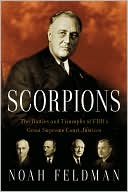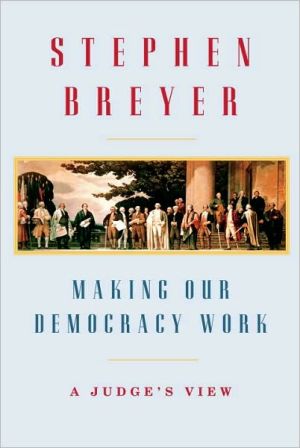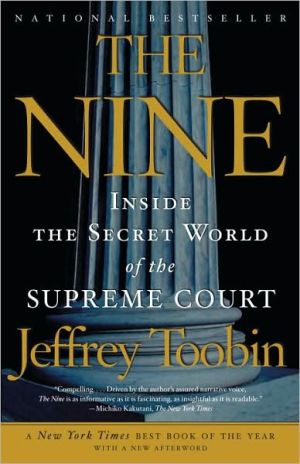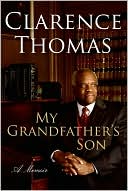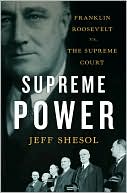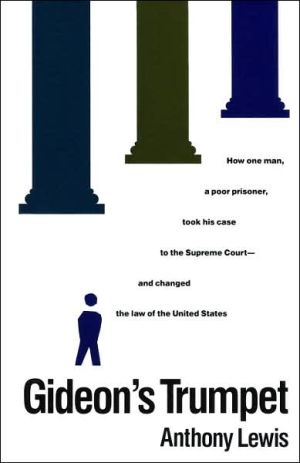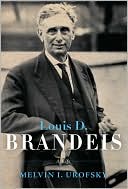Constitutional Deliberation in Congress: The Impact of Judicial Review in a Separated System
In Constitutional Deliberation in Congress J. Mitchell Pickerill analyzes the impact of the Supreme Court’s constitutional decisions on Congressional debates and statutory language. Based on a thorough examination of how Congress responds to key Court rulings and strategizes in anticipation of them, Pickerill argues that judicial review—or the possibility of it—encourages Congressional attention to constitutional issues. Revealing critical aspects of how laws are made, revised, and refined...
Search in google:
Analyzes the impact of the Supreme Court's constitutional decisions and its judicial review of statutes on lawmaking in Congress.
Constitutional deliberation in Congress\ The impact of judicial review in a separated system \ \ By J. Mitchell Pickerill \ Duke University Press\ \ ISBN: 0-8223-3262-0 \ \ \ Chapter One\ Constitutional Deliberation in a Separated System \ * * *\ In this chapter, I ask two related questions. First, where should we expect to find constitutional deliberation and construction in the American lawmaking system? Second, what is the likely impact of the Supreme Court and judicial review on constitutional deliberation in our separated system? As I explain in more detail later in this chapter, by "deliberation" I mean reflection and debate over the scope of federal powers under the Constitution in the context of legislation. An underlying assumption of this book is that there is substantial value to constitutional deliberation at multiple decision-making points in our lawmaking process.\ In addressing the questions raised in the preceding paragraph, this chapter explores an ongoing and engaging debate over the role of the Court and other governmental institutions, specifically Congress, in interpreting the Constitution. I suggest that there is truth to many of these accounts, and that a synthesis of several approaches is necessary to more accurately account for constitutional deliberation in the American system. I acknowledge that members of Congress do sometimes engage in constitutional deliberation, but I argue that the deliberation is often motivated and shaped bythe Court's judicial review decisions. In essence, the theoretical approach taken here merges the rich conception of Louis Fisher (1988) of constitutional dialogues with a strategic view of congressional behavior (see, e.g., Arnold 1990; Kingdon 1989; Krehbiel 1998; Mayhew 1974; Shepsle and Weingast 1995). Although much of the current scholarship on the subject emphasizes the impact that nonjudicial institutions have on constitutional construction, my emphasis is on the impact that the Court's decisions have on lawmaking and deliberation in Congress. To reiterate and emphasize a point made in the Introduction: there may be a movement afoot by some scholars to take the Constitution away from the Court, but we should not lose sight of the role that judicial review can play in encouraging and shaping constitutional debate and deliberation outside the courts. This chapter thus explores the current debates over the Constitution outside the Court, advocates a more synthesized framework for understanding constitutional deliberation in the American system, and concludes with a discussion of the nature and importance of constitutional deliberation in our lawmaking system.\ Judicial Supremacy, Coordinate Construction, and the Constitution outside the Court\ While an important theoretical matter, the underlying legitimacy of judicial review is rarely questioned today, even though it is not expressly provided for in the Constitution. Chief Justice John Marshall first exercised judicial review over an act of Congress in perhaps the most famous Supreme Court case, Marbury v. Madison (1803). Some argue that he announced and in effect granted the Court the power of judicial review, and others argue that he merely exercised and first articulated a power existing in the Constitution, even if only implicitly. As Alexander Bickel puts it: "Curiously enough, this power of judicial review, as it is called, does not derive from any explicit constitutional command.... This is not to say that the power of judicial review cannot be placed in the Constitution, merely that it cannot be found there" (1962, 1).\ There are different views about if and where the power can be "placed" in the Constitution, and whether the Framers intended for the judiciary to have the power at all. The main argument in favor of judicial review is that the Supremacy Clause of Article VI, read together with the "arising under" clause of Section 2 of Article III, implies the power. Since the Constitution is to be the "supreme law of the land" and the judiciary's "Power shall extend to all Cases ... arising under this Constitution ...," the Supreme Court must be charged with interpreting the Constitution and determining whether government actions are consistent with it (see Berger 1969; Bickel 1962; Corwin 1938; Wechsler 1959). Raoul Berger argues further that there is compelling evidence of the Framers' intention to give the judiciary a fairly broad power of judicial review to determine the constitutionality of government action. On the other hand, Judge Learned Hand argues that the power was indeed invented by Chief Justice Marshall, and that it can be found neither in the Constitution nor in a majority of the Framers' intentions. Nonetheless, Hand admitted that while he could not find or "place" judicial review in the Constitution, the power is consistent with the structures of the Constitution, and it is not a "lawless act to import into the Constitution such a grant of power" (Hand 1958, 29).\ The upshot of these debates is that at worst, judicial review can be considered consistent with the Constitution, and two hundred years of history have legitimized it; at best, the language of the Constitution supports the device, and it is consistent with original intent. However, accepting its underlying legitimacy does not end the inquiry into the nature of judicial review. Far from it, for it begs many questions regarding the legitimate exercise of judicial review. Two centuries after John Marshall and the Supreme Court first exercised judicial review in Marbury v. Madison, scholarly debates continue over the proper scope of judicial review, methods of constitutional interpretation, and judicial supremacy over constitutional interpretation. Much of the scholarly literature on judicial review has been spawned by Alexander Bickel's concerns that the Court's exercise of judicial review is undemocratic, or countermajoritarian (1962), although some scholars have questioned the antimajoritarian nature of judicial review (see, e.g., Dahl 1957; Graber 1999). For my purposes, the most important scholarly question is whether the Court's exercise of judicial review amounts to the final, definitive, and only legitimate interpretation of a constitutional provision, or, rather, the other branches of government may also engage in constitutional construction. And where should we usually expect to find deliberation over constitutional values in the political and lawmaking processes?\ An ongoing and vibrant scholarly debate has been waged in recent years over the roles of the Supreme Court and Congress in interpreting the Constitution. Advocates of "judicial supremacy" argue that the Court should be the final arbiter of the Constitution, and at least by implication, that the Court's pronouncements of constitutional law are the most important declarations of constitutional meaning (e.g., Alexander and Schauer 1997; Bork 1990; Dworkin 1981; Ely 1980). The Court itself has made this pronouncement on more than one occasion. Chief Justice Marshall's language in Marbury v. Madison certainly lends itself to an interpretation that the Court has the final say in constitutional disputes; Marshall noted that the Constitution is intended to be the "supreme law of the land," and he declared, "It is emphatically the province and duty of the judicial department to say what the law is" (at 177). Perhaps most famously in modern times, the Court declared its interpretations of the Equal Protection Clause of the Fourteenth Amendment the supreme law of the land in Cooper v. Aaron (1958). At issue in Cooper was whether states that had not been parties to Brown v. Board of Education (1954) were bound by it. In Brown, the Court had overruled Plessy v. Ferguson (1896) and the "separate but equal" doctrine, and declared that state-sanctioned segregated schools violated the Equal Protection Clause. The Brown Court thus ordered the school district in the case to desegregate its schools. In Cooper, Governor Orval Faubus of Arkansas opposed the desegregation of Arkansas schools, arguing that his state, which was not a party to Brown, did not have to follow the decision because it is the Constitution that is supreme, not the Court's interpretations of it. Needless to say, Faubus and other southern segregationists disagreed with the Brown court's interpretation of the Equal Protection Clause. The Cooper Court ruled that Arkansas most certainly did have to follow Brown. The unanimous Court held that Marshall's opinion in Marbury v. Madison "declared the basic principle that the federal judiciary is supreme in the exposition of the law of the Constitution, and that principle has ever since been respected by this Court and the Country as a permanent and indispensable feature of our constitutional system" (at 18).\ More recently, a majority of the Supreme Court reaffirmed the view that its decisions are "supreme," in City of Boerne v. Flores (1997). That case concerned the Religious Freedom Restoration Act (RFRA) of 1993. Congress passed RFRA in response to another Supreme Court decision, Employment Division v. Smith (1990). In Smith, the Court determined that Alfred Smith's religious freedom had not been violated when he was fired and refused unemployment benefits by the state of Oregon for using the illegal hallucinogenic drug peyote in Native American religious ceremonies. Congress passed RFRA in an attempt to undo the holding in Smith and use statutory means to protect those engaged in religious activities from discrimination. Members of Congress argued that they had the power to pass RFRA pursuant to the enforcement powers granted to Congress in Section 5 of the Fourteenth Amendment. In City of Boerne, the Court essentially held that Congress did not have the authority to "undo" or alter the Court's constitutional holding, or interpretation of the Free Exercise Clause, in Smith. Justice Kennedy wrote for the majority: "The power to interpret the Constitution in a case or controversy remains in the Judiciary" (524). He concluded: "It is for Congress in the first instance to 'determine whether and what legislation is needed to secure the guarantees of the Fourteenth Amendment,' and its conclusions are entitled to much deference [citations omitted]. Congress' discretion is not unlimited, however, and the courts retain the power, as they have since Marbury v. Madison, to determine if Congress has exceeded its authority under the Constitution. Broad as the power of Congress is under the Enforcement Clause of the Fourteenth Amendment, RFRA contradicts vital principles necessary to maintain separation of powers and the federal balance" (536). Kennedy, like other justices before him, essentially interpreted Marbury to stand for the proposition of judicial supremacy.\ Constitutional scholars have traditionally agreed with the Court's declarations of judicial supremacy, and some have sought to provide deeper theoretical justifications in support of judicial supremacy. The theory of judicial supremacy has been accepted by scholars from across the ideological spectrum and on different sides of debates over interpretivism and noninterpretivism, judicial restraint and judicial activism, including the likes of Robert Bork, Raoul Berger, Richard Epstein, Christopher Wolfe, John Hart Ely, Laurence Tribe, Ronald Dworkin, and Michael Perry. One of the most comprehensive contemporary justifications of judicial supremacy comes from the constitutional scholars Larry Alexander and Frederick Schauer (1997). They make a strong case that a "single authoritative decisionmaker" is needed in order to avoid "interpretive anarchy" (1997, 1379). Alexander and Schauer argue that constitutional law needs to be clear and consistent in order to provide clear guidance to other government actors and individuals in society-in essence, it is important to have one authoritative interpretation of the Constitution at play in order to comply with a principle of legality and the rule of law. Alexander and Schauer, like other judicial supremacists, maintain that the courts are the best institution to serve as this single authoritative decision maker because that is what they are designed to do. This is especially so because of judicial independence and legal training. And because the Supreme Court sits atop the judicial hierarchy, it is best situated to be the single and final authoritative decision maker. The justices on the Supreme Court are only indirectly influenced by the electoral process, and they are trained in methods of legal interpretation. Accordingly, judicial supremacists believe that the justices are the most likely to engage in serious constitutional deliberation and interpretation, and least likely to be influenced by more overtly political and public policy concerns.\ The theory of judicial supremacy has not gone unchallenged, however. In the past two decades, an increasing number of scholars have argued that Congress and other government institutions should engage in "coordinate construction" of the Constitution, or "departmentalism" (see, e.g., Burgess 1992; Burt 1992; Dimond 1989; Fisher 1988; Jacobsohn 1986; Levinson 1988; Macedo 1988; Murphy 1986; Nagel 1989), and that various types of "constitutional construction" have historically taken place outside the Court (see, e.g., Ackerman 1991; Agresto 1984; Burt 1992; Fisher 1990; Whittington 1999). At least one scholar has argued for "taking the Constitution away from the Court" and for a "populist constitutionalism" (Tushnet 1999). These scholars all seek to show the importance of understanding "the Constitution outside the Court," and they reject judicial supremacy.\ Fueled by historical and American political development studies, these constitutional scholars have shown how the Constitution has structured debates and political conflicts outside the Courts throughout America's relatively short history. For example, Keith Whittington has shown how the Constitution has not always been viewed merely as legal verbiage to be interpreted by lawyers and judges, but over time has helped to structure political debates, decision making, and processes without judicial intervention-as it was intended to do-suggesting that judicial supremacy is incompatible with original conceptions of the Constitution and judicial review in early American government (1999; see also Burt 1992; Graber 1998; Graber 1999). Louis Fisher has demonstrated how Congress and presidents have resolved separation of powers issues under the Constitution through compromise and accommodation, often without judicial intervention (1988; 1990; 1997). Additionally, theories of American constitutionalism advanced by scholars such as Bruce Ackerman (1991) and Stephen Griffin (1996) argue that major shifts in constitutional meaning and values have historically occurred as a result of extrajudicial forces.\ Perhaps the culmination of the "Constitution outside the Courts" debate is Mark Tushnet's call for "taking the Constitution away from the Courts" (1999). Tushnet not only refutes the theory of judicial supremacy and notes important examples of constitutional construction outside the judiciary, but advocates a "populist constitutional law" that minimizes, if not eliminates, the role of the Court in much constitutional construction. Tushnet further rejects the notion that the Court's constitutional decisions have "given us a rich vocabulary of practical political philosophy," arguing in the end that there is little value to judicial review (1999, 194). He concludes that democratic processes and institutions are capable of producing adequate and even beneficial interpretations of the Constitution.\ The various coordinate construction and Constitution outside the Courts studies show that members of Congress (and other nonjudicial actors) have in fact, at least occasionally, engaged in constitutional debates. Although the different scholars emphasize different theoretical justifications for and benefits of constitutional construction outside the Court, they present a collective case that Congress can, does, and should challenge, ignore, or reject the Court's interpretations when the majority of Congress finds fault with those interpretations. There are also constitutional issues debated in the political branches that do not involve "cases or controversies"; hence, they do not involve the courts at all. The emphasis in much of this scholarship is placed on historical examples of constitutional debates and construction in Congress and elsewhere outside the Courts, and on normative preferences that the Court's interpretations should not go unchallenged. Many of the scholars express concern that if judicial review amounts to judicial supremacy, and if judicial supremacy is widely accepted, little constitutional deliberation will take place outside the Court. While not all Constitution outside the Courts scholars go as far as Tushnet in urging that the Constitution be taken away from the Court altogether, the role of judicial review is often deemphasized. I believe it might be instructive to explore in more detail the role that the Court's exercise of judicial review may play in influencing constitutional deliberation outside the Court.\ (Continues...)\ \ \ \ \ Excerpted from Constitutional deliberation in Congress by J. Mitchell Pickerill Excerpted by permission.\ All rights reserved. No part of this excerpt may be reproduced or reprinted without permission in writing from the publisher.\ Excerpts are provided by Dial-A-Book Inc. solely for the personal use of visitors to this web site. \ \
List of tables and figuresAcknowledgmentsIntroduction11Constitutional deliberation in a separated system112Judicial review : roadblock, speed bump, or detour?313The shadows of uncertain scrutiny : legislating in a period of judicial dualism634The missing constitution : legislating in the darkness of judicial deference955The nature of things : anticipation and negotiation, interaction and reaction133App. AJudicial review decisions and relevant legislation155App. B: In-depth interviews161Notes167Table of cases175Bibliography177Index183
\ From the Publisher“Legal scholars have recently questioned judicial review on the ground that constitutional deliberation should be returned to the people and their political representatives. Drawing from case studies of several federal statutes invalidated by the Supreme Court, Mitch Pickerill thoughtfully suggests that serious constitutional discourse in the legislature is unlikely unless the Court continues to exercise its power of judicial review. I found his argumentation persuasive as well as informative. Constitutional Deliberation in Congress is well worth reading by lawyers as well as by students of American government.”—William N. Eskridge Jr., Yale Law School\ “Constitutional Deliberation in Congress brings to light important new evidence regarding how Congress and the Court relate to one another in constitutional cases, and it provides the first high-quality and systematic examination of how Congress responds to judicial invalidations of its legislation.”—Keith Whittington, Princeton University\ \ \

